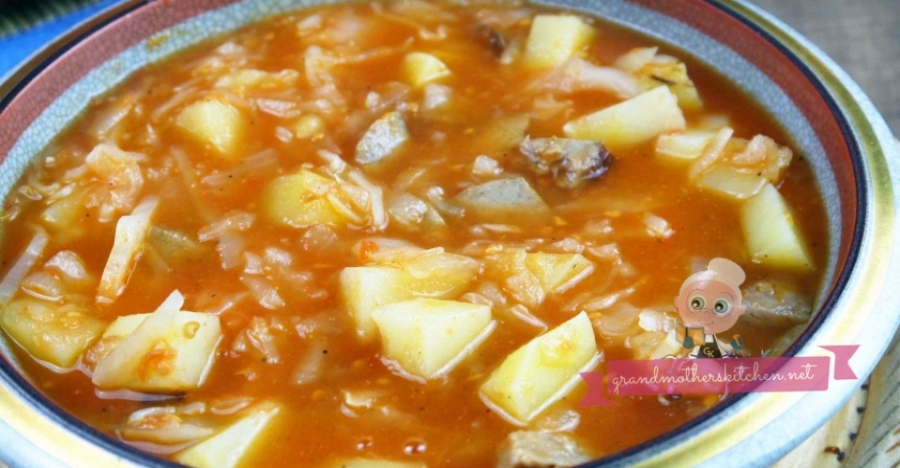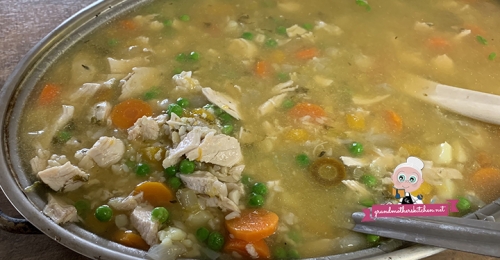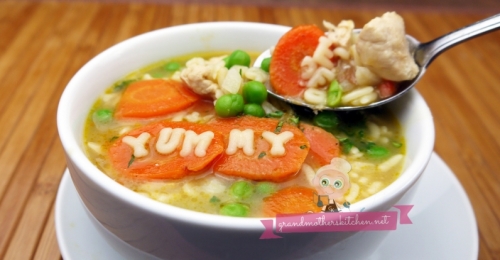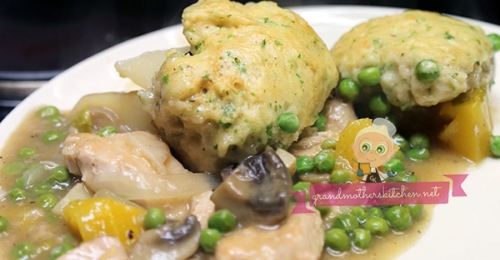Cabbage Sausage Potato Stew

About this Recipe
Cabbages are excellent vegetable in Grandmother's Kitchen and with the softening and boiling of them in this recipe we found them easy for our bodies to digest. This cabbage stew recipe could easily be vegan if you just omit this sausage and perhaps add some frozen peas for your protein source. In fact, just writing this, I know plan to add some frozen peas to the non-vegan recipe also as they would be a wonderful addition.
The flavor is somewhat savory, somewhat tangy, and overall very very satisfying. I wanted to call this stew recipe cabbage roll soup or perogie stew, or Ukrainian mixed stew, as it embodies the flavors of cabbage rolls and perogies which are both classic meals in our kitchen.
Grandmother's TIPS for Cabbage Sausage Potato Stew Recipe:
1. For quicker dicing, use a mandoline for dicing and slicing.
2. For extra safety with a mandoline, these gloves are amazing and make it so you simply cannot cut yourself through the gloves.
3. If you have leftover unused cabbage you can freeze it, or shred it first and freeze it and then just use handfuls of it in soups, salads and stirfrys.
4. Extra cabbage can also be made into a yummy Cranberry Apple Coleslaw Recipe.
5. Buy organic potatoes, since they are a crop that is heavily sprayed in conventional farming. Also, don't be afraid of funny 'ugly' looking potatoes like the one in the image below, the less perfect - the more likely they are organic.
5. Choose your sausage from small farmers with healthy ethical farming practices to assure you are getting the highest quality meat you can find. If the price is hard to swallow...just remember that these healthier meat products are actually higher in protein and other micronutrients and so you do not need to eat as much to get the benefits for your health.
When you’re making any food, it’s important to catch mold before it gets to be a big problem. For the most part, a little bit of mold won’t hurt anything too much, so if you find a patch of mold on a piece of fruit or a vegetable, it’s fine just to throw it away. Some people just cut off the moldy area and eat the food which won’t be super harmful, but the mold does grow deeper than you think. The fuzzy part that you see on your food is just the start of the mold, but the roots of the fungus reach down into the food. So that’s why throwing it away completely is the best idea since the food has started to decay. You can throw moldy food in your compost pile since all of the food in your compost pile is being decomposed and eventually will be made into nice rich compost.
Ingredients
Servings: Approx. 8 large bowls
5 medium potatoes (about 4 cups once it is cubed)
1 medium onion (white or yellow)
1/3 green cabbage (about 4 cups once it is diced)
1 turkey kielbasa ring (you could also use pork or beef)
946ml of vegetable broth (or chicken, or beef - your choice)
1 jar (1 quart) canned tomatoes (about 4 cups) Or store bought canned stewed tomatoes
4 Tablespoons olive oil
salt and pepper to taste
Sour cream, to serve with (optional)
Directions
1. Wash and dice the onion and cabbage. Since the heads of cabbage will vary - measure out 4 cups of shredded cabbage and freeze the rest OR store in fridge for about a week for use in other recipes.
2. Wash potatoes and cut into cubes about 1 inch squares. For extra nutrients you can leave the skin on the potatoes.
3. Cut the sausage into bite sized pieces.
4. Heat a large pot or Dutch oven to medium - high, and add 2 tablespoons of olive oil. Add onions and cook for 2 minutes to soften. Add the sausage and cook to brown about 3-4 minutes.
5. Add potatoes and cabbage and stir well. Add the remaining 2 tablespoons of oil and cook on medium- high stirring often to mix the flavors.
6. Add about 1 cup of the broth and cover pot with lid, cooking for 3-4 minutes before opening lid to stir.
7. Add the remaining broth and cover to cook for 15-20 minutes or until the potatoes are soft to bite but not mushy.
8. While the soup cooks, use a blender or hand held immersion blender to puree the tomatoes.
9. Once potatoes are ready you can add the pureed tomatoes. Give mixture a stir, cook for one more minute then remove from heat.
10. Serve with sour cream.
ENJOY!
Return to this Cabbage Sausage Potato Stew recipe or check out more recipes at Grandmother's Kitchen
When it comes to homemade meals, a stew is probably one of the top favourite comfort foods. Perhaps because it's got everything you need in it; meat, vegetables and great flavour. The word stew comes from the French word estuier which means to enclose because stew is usually cooked in a pot that remains closed for the duration of cooking.
Stews have been around for centuries, and pretty much each culture has its own variation of a stew recipe. There are also different types of stew classified as either brown or white stews. A white stew is not cooked in fat before other ingredients are added whereas a brown stew it is.
Even though beef stew is a top-rated recipe, any meat can be used in stew including fish, chicken or pork. They can also be meatless. Many people think that stews and soups are the same, but they are different because a stew is thicker and can be eaten with a fork. This stew recipe includes sausage meat, and you can use any type of sausage meat you like in the recipe. The other main ingredients are potatoes and cabbage. The type of cabbage you use in cabbage recipes like this will depend on the flavour profile you want.
A green cabbage is used in this recipe because of its subtle flavour, but other cabbage recipes might call for a red cabbage which has more of a spicy flavour. Cabbage nutrition includes vitamin C, vitamin K, manganese, dietary fibre, vitamin B1 and vitamin B6.
Plus you'll get all of the nutrients from the potatoes and vegetable or meat broth so overall, this would be a very healthy meal. Some homemade biscuits or rolls would be perfect alongside this delicious stew as well.
You can also put any rotting food down your garburator if you have one, but don’t put it down your kitchen sink drain through as this will clog it. If there has been some food pushed down your drain, you will need to learn more about how to unclog a clogged drain by using natural kitchen cleaners and smart house cleaning tips. First of all, remove the food pieces from the drain as soon as possible.
One of the best house cleaning tips for clogged drains in your kitchen or even in your bathroom is to use natural kitchen cleaners like baking soda and vinegar. All you do is put a few tablespoons of baking soda down the clogged drain and then follow that up with some white vinegar. Let it all sit for up to an hour and then flush it down with boiling water and your drain will be unclogged and ready to go.







